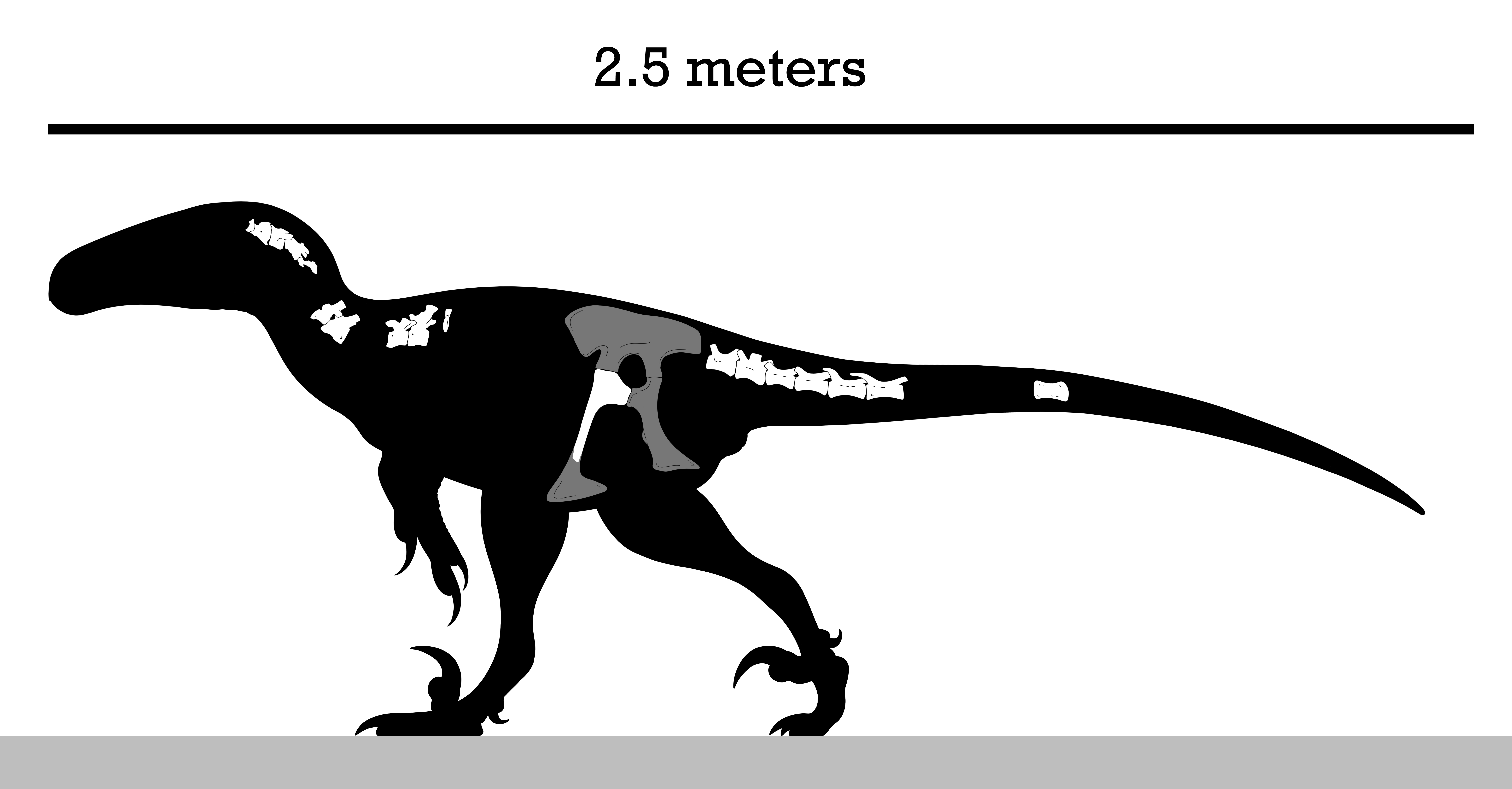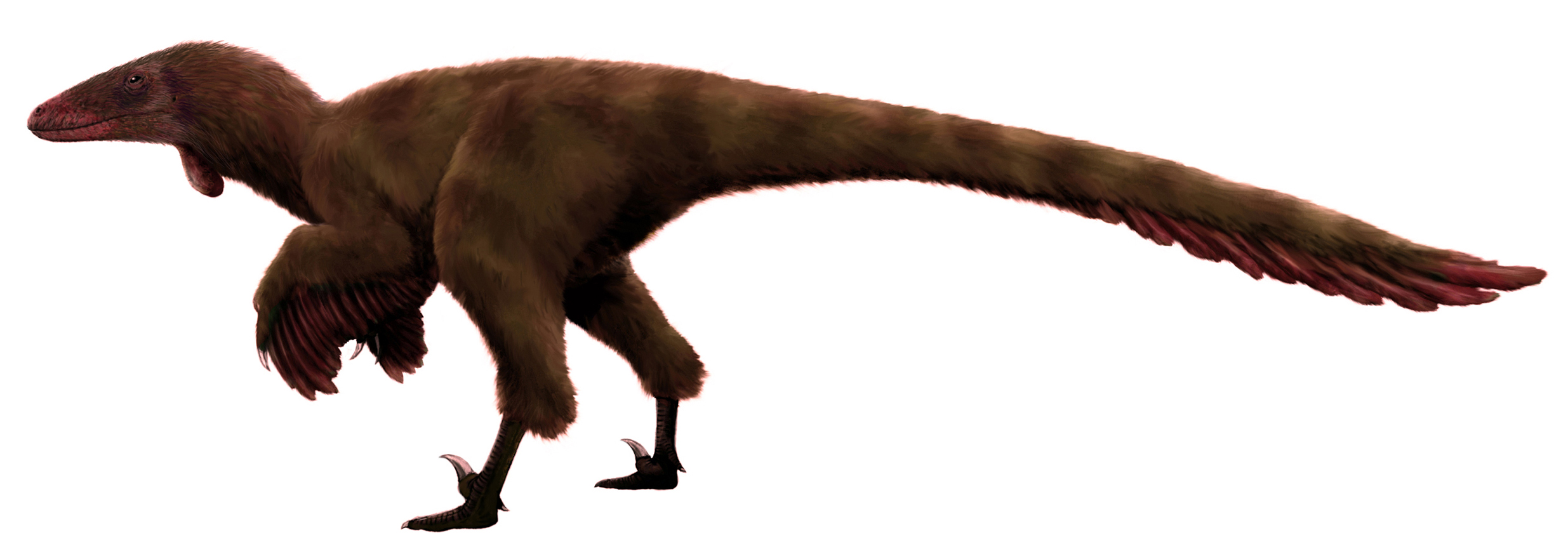Yurgovuchia on:
[Wikipedia]
[Google]
[Amazon]
''Yurgovuchia'' (meaning "coyote") is a genus of
 The holotype was collected by Donald D. DeBlieux in 2005, from Don's Place, part of the Doelling's Bowl bone bed in Grand County, Utah. This bone bed is in the lower
The holotype was collected by Donald D. DeBlieux in 2005, from Don's Place, part of the Doelling's Bowl bone bed in Grand County, Utah. This bone bed is in the lower
 According to its describers in 2012, ''Yurgovuchia'' can be recognized from other dromaeosaurid taxa by the following characteristics: each side of the
According to its describers in 2012, ''Yurgovuchia'' can be recognized from other dromaeosaurid taxa by the following characteristics: each side of the
 Other dinosaurs are also known from Don's Place including the iguanodontians ''
Other dinosaurs are also known from Don's Place including the iguanodontians ''
dromaeosaurid
Dromaeosauridae () is a family of feathered theropod dinosaurs. They were generally small to medium-sized feathered carnivores that flourished in the Cretaceous Period. The name Dromaeosauridae means 'running lizards', from Greek ('), meaning ...
theropod dinosaurs
Dinosaurs are a diverse group of reptiles of the clade Dinosauria. They first appeared during the Triassic period, between 243 and 233.23 million years ago (mya), although the exact origin and timing of the evolution of dinosaurs is t ...
that lived in North America
North America is a continent in the Northern Hemisphere and almost entirely within the Western Hemisphere. It is bordered to the north by the Arctic Ocean, to the east by the Atlantic Ocean, to the southeast by South America and the Car ...
during the Early Cretaceous
The Early Cretaceous ( geochronological name) or the Lower Cretaceous (chronostratigraphic name), is the earlier or lower of the two major divisions of the Cretaceous. It is usually considered to stretch from 145 Ma to 100.5 Ma.
Geology
Pro ...
period in what is now the Cedar Mountain Formation. It contains a single species, ''Yurgovuchia doellingi''. The remains were discovered in Utah, United States.
Discovery and naming
 The holotype was collected by Donald D. DeBlieux in 2005, from Don's Place, part of the Doelling's Bowl bone bed in Grand County, Utah. This bone bed is in the lower
The holotype was collected by Donald D. DeBlieux in 2005, from Don's Place, part of the Doelling's Bowl bone bed in Grand County, Utah. This bone bed is in the lower Yellow Cat Member
The Cedar Mountain Formation is the name given to a distinctive sedimentary geologic formation in eastern Utah, spanning most of the early and mid-Cretaceous. The formation was named for Cedar Mountain in northern Emery County, Utah, where Willia ...
of the Cedar Mountain Formation, dating probably to the Valanginian stage of the Early Cretaceous
The Early Cretaceous ( geochronological name) or the Lower Cretaceous (chronostratigraphic name), is the earlier or lower of the two major divisions of the Cretaceous. It is usually considered to stretch from 145 Ma to 100.5 Ma.
Geology
Pro ...
period, about 139–134.6 million years ago. ''Yurgovuchia'' was first described and named by Phil Senter, James I. Kirkland
James Ian Kirkland (born August 24, 1954) is an American paleontologist and geologist. He has worked with dinosaur remains from the south west United States of America and Mexico and has been responsible for discovering new and important genera. ...
, Donald D. DeBlieux, Scott Madsen and Natalie Toth in 2012
File:2012 Events Collage V3.png, From left, clockwise: The passenger cruise ship Costa Concordia lies capsized after the Costa Concordia disaster; Damage to Casino Pier in Seaside Heights, New Jersey as a result of Hurricane Sandy; People gather ...
and the type species is ''Yurgovuchia doellingi''.
The generic name is derived from the Ute
Ute or UTE may refer to:
* Ute (band), an Australian jazz group
* Ute (given name)
* ''Ute'' (sponge), a sponge genus
* Ute (vehicle), an Australian and New Zealand term for certain utility vehicles
* Ute, Iowa, a city in Monona County along ...
word ''yurgovuch'', meaning coyote
The coyote (''Canis latrans'') is a species of canis, canine native to North America. It is smaller than its close relative, the wolf, and slightly smaller than the closely related eastern wolf and red wolf. It fills much of the same ecologica ...
, a predator of similar size to ''Y. doellingi'' which currently inhabits the same region. The specific name Specific name may refer to:
* in Database management systems, a system-assigned name that is unique within a particular database
In taxonomy, either of these two meanings, each with its own set of rules:
* Specific name (botany), the two-part (bino ...
, ''doellingi'', honors the geologist Helmut Doelling, for his 50-plus years of geological research and mapping of Utah for the Utah Geological Survey and for causing the discovery of the Doelling's Bowl dinosaur sites, in which ''Y. doellingi'' was collected.
Description
''Yurgovuchia'' is known only from a single individual represented by an associated partial postcranialskeleton
A skeleton is the structural frame that supports the body of an animal. There are several types of skeletons, including the exoskeleton, which is the stable outer shell of an organism, the endoskeleton, which forms the support structure inside ...
. The holotype and the only known specimen, UMNH VP 20211, includes cervical
In anatomy, cervical is an adjective that has two meanings:
# of or pertaining to any neck.
# of or pertaining to the female cervix: i.e., the ''neck'' of the uterus.
*Commonly used medical phrases involving the neck are
**cervical collar
**cervic ...
, dorsal, and caudal vertebrae
The spinal column, a defining synapomorphy shared by nearly all vertebrates,Hagfish are believed to have secondarily lost their spinal column is a moderately flexible series of vertebrae (singular vertebra), each constituting a characteristic ...
as well as the proximal end of a left pubis. The preserved vertebrae are fused, indicating that the specimen was an adult at the time of death and not a juvenile specimen of ''Utahraptor
''Utahraptor'' (meaning "Utah's thief") is a genus of large dromaeosaurid dinosaur that lived in North America during the Early Cretaceous period. It was a heavy-built, ground-dwelling, bipedal carnivore. It contains a single species, ''Utahrap ...
''. Instead of this, it represents a smaller and different species of dromaeosaurid
Dromaeosauridae () is a family of feathered theropod dinosaurs. They were generally small to medium-sized feathered carnivores that flourished in the Cretaceous Period. The name Dromaeosauridae means 'running lizards', from Greek ('), meaning ...
, with an estimed size of .
 According to its describers in 2012, ''Yurgovuchia'' can be recognized from other dromaeosaurid taxa by the following characteristics: each side of the
According to its describers in 2012, ''Yurgovuchia'' can be recognized from other dromaeosaurid taxa by the following characteristics: each side of the axial
Axial may refer to:
* one of the anatomical directions describing relationships in an animal body
* In geometry:
:* a geometric term of location
:* an axis of rotation
* In chemistry, referring to an axial bond
* a type of modal frame, in music
* ...
centrum have a single pneumatopore, third cervical vertebra with cranial end of the centrum not beveled, cervical prezygapophyses
The articular processes or zygapophyses (Greek language, Greek ζυγον = "yoke" (because it links two vertebrae) + απο = "away" + φυσις = "-physis, process") of a vertebra are projections of the vertebra that serve the purpose of fitting ...
is flexed, cervical vertebrae epipophyses is above the postzygapophyseal facets, the pubis lacks pubic tubercle, the cranial faces of the centrum of caudal vertebrae are round, the cervical and dorsal vertebrae preserve hypapophyses without pneumatopores, the caudal prezygapophyses is distally elongated to the transition point, but not surpassing the length of a centrum.
Classification
According to the phylogenetic analysis performed by its describers in 2012, ''Yurgovuchia'' represents advanceddromaeosaurine
Dromaeosaurinae is a subfamily of the theropod group Dromaeosauridae. The earliest dromaeosaurine is ''Utahraptor'', dating back to the Early Cretaceous period in North America, however, some isolated teeth seems to represent an indeterminate spe ...
s, closely related to '' Achillobator'', ''Dromaeosaurus
''Dromaeosaurus'' (, "running lizard") is a genus of dromaeosaurid theropod dinosaur which lived during the Late Cretaceous period (middle late Campanian and Maastrichtian), sometime between 80 and 69 million years ago, in Alberta, Canada and the ...
'' and ''Utahraptor
''Utahraptor'' (meaning "Utah's thief") is a genus of large dromaeosaurid dinosaur that lived in North America during the Early Cretaceous period. It was a heavy-built, ground-dwelling, bipedal carnivore. It contains a single species, ''Utahrap ...
''. Below are the results obtained:
Paleoecology
 Other dinosaurs are also known from Don's Place including the iguanodontians ''
Other dinosaurs are also known from Don's Place including the iguanodontians ''Iguanacolossus
''Iguanacolossus'' (meaning "Iguana Colossus" or "Colossal Iguana") is a genus of iguanodontian ornithopod dinosaur that lived in North America during the Early Cretaceous period. It is known from UMNH VP 20205, the associated holotype with a lar ...
'', polacanthines, and velociraptorine dromaeosaurids represented by a pubis (UMNH VP 21752) and a tentative radius (UMNH VP 21751). Many additional theropods have previously been described from the Yellow Cat Member, including the therizinosaur '' Falcarius'' and the small, predatory troodontids '' Geminiraptor'' from the lower part of the member, in addition, the large dromaeosaurines ''Utahraptor
''Utahraptor'' (meaning "Utah's thief") is a genus of large dromaeosaurid dinosaur that lived in North America during the Early Cretaceous period. It was a heavy-built, ground-dwelling, bipedal carnivore. It contains a single species, ''Utahrap ...
'', small ornithomimosaurs
Ornithomimosauria ("bird-mimic lizards") are theropod dinosaurs which bore a superficial resemblance to the modern-day ostrich. They were fast, omnivorous or herbivorous dinosaurs from the Cretaceous Period of Laurasia (now Asia, Europe and North ...
''Nedcolbertia
''Nedcolbertia'' is a genus of theropod dinosaur from the Early Cretaceous Period of North America.
Discovery and naming
Three skeletons of a theropod were discovered in 1993 by Christopher Whittle near Cisco in the basal Yellow Cat Member of ...
'', and unnamed eudromaeosaurs
Eudromaeosauria ("true dromaeosaurs") is a subgroup of terrestrial Dromaeosauridae, dromaeosaurid theropod dinosaurs. They were relatively small to medium-sized, feathered hypercarnivores (with diets consisting almost entirely of other terrestr ...
represented by a tail skeleton (UMNH VP 20209) from the upper part of the member.
''Yurgovuchia'' shared its environment and lived alongside other dinosaurs in the Lower Yellow Cat, such as the theropods ''Falcarius'' and ''Geminiraptor'', the sauropods '' Mierasaurus'' and the large iguanodontian
Iguanodontia (the iguanodonts) is a clade of herbivorous dinosaurs that lived from the Middle Jurassic to Late Cretaceous. Some members include ''Camptosaurus'', ''Dryosaurus'', ''Iguanodon'', ''Tenontosaurus'', and the hadrosaurids or "duck-bill ...
s ''Iguanacolossus''. There are also indeterminate goniopholidid
Goniopholididae is an extinct family of moderate-sized semi-aquatic neosuchian crocodyliformes. Their bodyplan and morphology are convergent on living crocodilians. They lived across Laurasia (Asia, Europe and North America) between the Middle Ju ...
crocodiles and the unnamed velociraptorines
Velociraptorinae is a subfamily of the theropod group Dromaeosauridae. The earliest velociraptorines are probably ''Nuthetes'' from the United Kingdom, and possibly ''Deinonychus'' from North America. However, several indeterminate velociraptorin ...
known from the Lower Yellow Cat.
See also
* Timeline of dromaeosaurid research * Cedar Mountain FormationReferences
{{Taxonbar, from=Q3236057 Eudromaeosaurs Early Cretaceous dinosaurs of North America Fossil taxa described in 2012 Taxa named by James I. Kirkland Paleontology in Utah